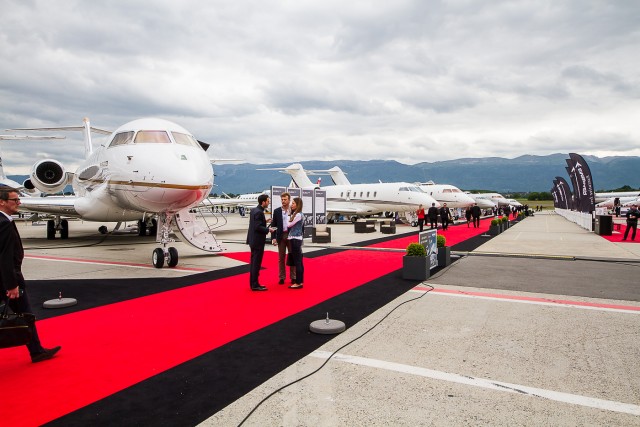
The static display at this year’s EBACE consisted of 53 aircraft – Photo: Jacob Pfleger | AirlineReporter
I was fortunate enough to attend the European Business Aviation Convention & Exhibition (EBACE) again this year in Geneva. This is the premier business aviation event in Europe and is the second-largest gathering of industry professionals, following the National Business Aviation Association (NBAA) convention in America.
This year’s EBACE attracted close to 500 exhibitors and 53 aircraft on static display. While this was not as impressive as last year’s event, there were still some new and interesting additions not previously seen. The clear highlight, for me, was checking out the HondaJet.
This was the first public appearance of Honda’s new light business jet in Europe. The aircraft is most easily recognizable by its wing-mounted engines, something that is a major first. This unique design, increases the baggage volume and allows for a fully-enclosed lavatory to be fitted in the cabin. And who doesn’t appreciate that?
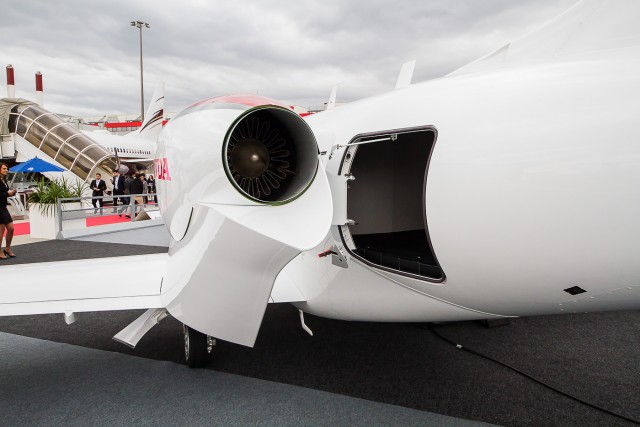
The unique wing-mounted engines on the Hondajet allow for increased baggage space – Photo: Jacob Pfleger | AirlineReporter
The HondaJet has a seating capacity for up to five passengers in a club-style layout. And of course, it has the certified lavatory “jump-seat.”
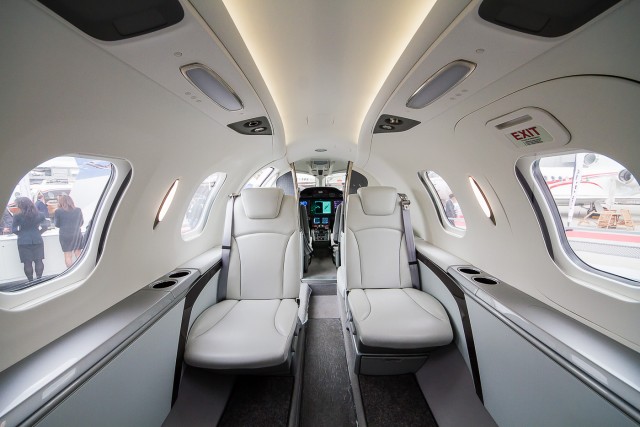
The surprisingly spacious cabin of the Hondajet seats up to five – Photo: Jacob Pfleger | AirlineReporter
The cabin is surprisingly spacious for any jet in its class, and it is not hard to see the influences of the Japanese car manufacturer on its design — even the characteristic red and white livery is very Honda-like.
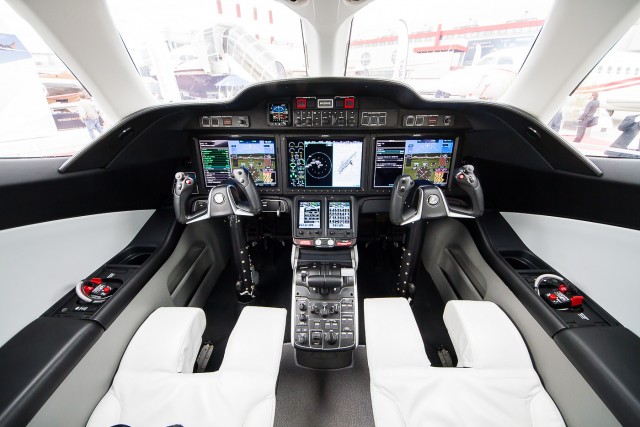
The very smart looking cockpit with the Garmin G300 avionics suite – Photo: Jacob Pfleger | AirlineReporter
The flightdeck is equally impressive. Originally, Honda selected the popular Garmin G1000 avionics suite. But given the delays in production and certification of the aircraft, they were able to upgrade to the cutting-edge Garmin G3000 avionics suite instead.
At present, orders for the HondaJet exceed 100, with four already in service (all in the USA). Given its range of 1180nm (with four passengers), it is ideally suited for most continental European city pairs as well as a number of key city pairs in the US.
With its cruising speed of 420 knots, it also makes it a class leader in terms of speed, range, and efficiency.
As well as the static display, there was much to see in the exhibition halls. Every year, EBACE brings together the leading manufacturers of business jet interior design and there are always new and interesting concepts to experience.
Last year, the prominent display was the panoramic window designed by Fokker for the Boeing Business Jet (BBJ). This year, the most “out there” innovation would have to be the fire-less fireplace designed by Lufthansa Technik. This concept delivers a realistic fireplace experience on-board an aircraft, without all of the safety and regulatory issues which would arise with flying with open flame in the cabin (not something many want to experience).
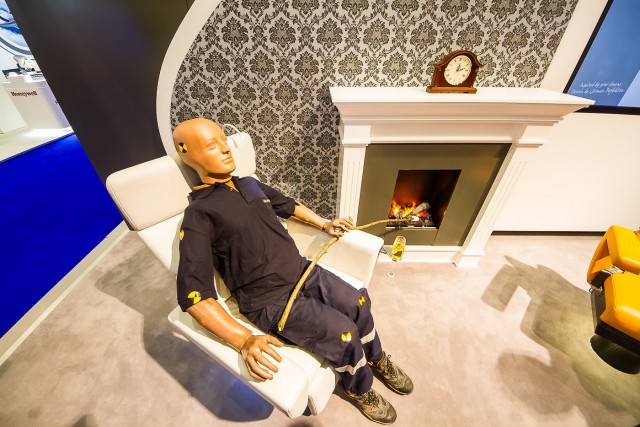
A fire-less fireplace on a plane? It’s possible thanks to Lufthansa Technik’s cutting-edge design – Photo: Jacob Pfleger | AirlineReporter
Another exciting innovation, for business aircraft, was presented by Aerolux, who primarily designs aircraft galley equipment. As the catering requirements of business jet clients are often of the highest standards, they have developed a range of interesting fittings which are not always found on your regular commercial jets, but are slowly making an appearance in the premium cabins of Emirates and Etihad. These galley fittings include a bread toaster, a wine fridge, as well as a frying pan to make steaks and fried eggs.
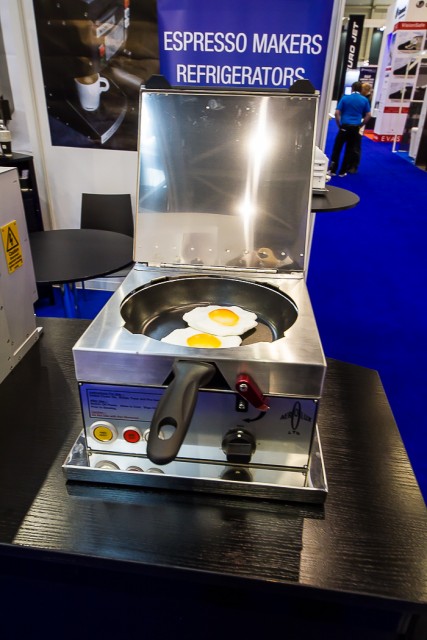
Fried eggs on a plane? No problem thanks to Aerolux’s unique in-flight pan design – Photo: Jacob Pfleger | AirlineReporter
During the show, Boeing announced a retrofit program with Aviation Partners for all customers with BBJs, whereby the winglets can now be upgraded to the split scimitar design, which is now becoming standard on most new Boeing 737 deliveries. The new winglet design promises a fuel efficiency savings of between 2-3%, which can really add up.
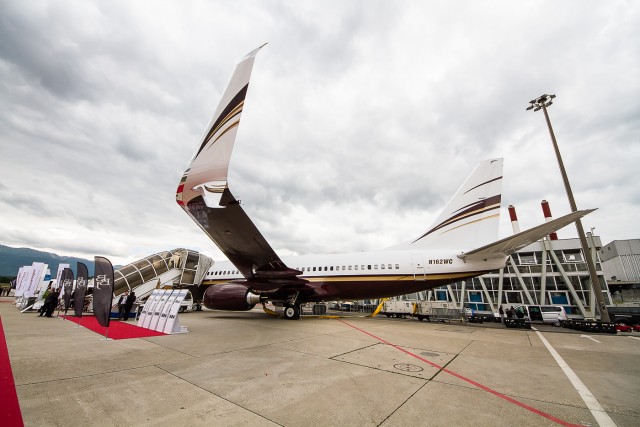
Split scimitar winglets are now a retrofit option for all BBJ customers – Photo: Jacob Pfleger | AirlineReporter
In terms of aircraft orders, the biggest order at EBACE was that of Qatar Executive, which confirmed up to 30 Gulfstream aircraft. The order is not only for the flagship G650ER, but also the new G500. Qatar Executive will begin to take delivery of the new planes at the end of this year and add them to their (already impressive) fleet of aircraft.
During the EBACE press conference, Qatar Airways Group chief executive Akbar al-Baker stated, “Qatar Executive continues to expand its operations, and the incoming addition of these new aircraft will enable us to widen the range of services available to our clients seeking bespoke and tailored travel services.”
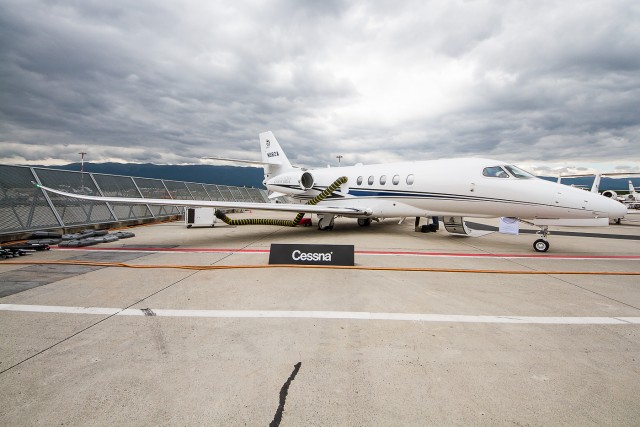
Another exciting aircraft at the static display was Cessna’s new Citation Latitude – Photo: Jacob Pfleger | AirlineReporter
EBACE showed that the business aviation sector is in a strong recovery mode from the effects of the recent global financial crisis. The number of business jet orders is very close to reaching pre-recession levels and the overall amount of business flights within Europe and around the world is on the rise.
Despite this year having the least impressive static display, compared to previous years, I still enjoyed it very much and am already looking forward to next year’s event.
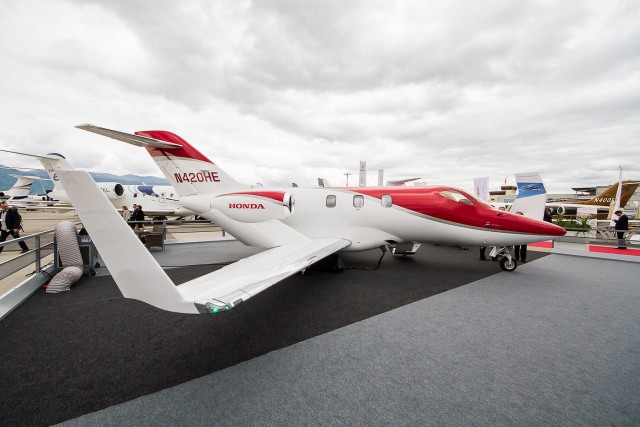
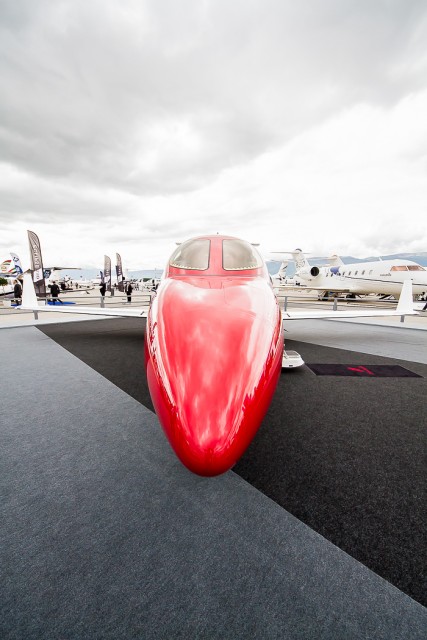
More on the HondaJet please.
Wow that plane is so neat.
Stay tuned 🙂
David | AirlineReporter